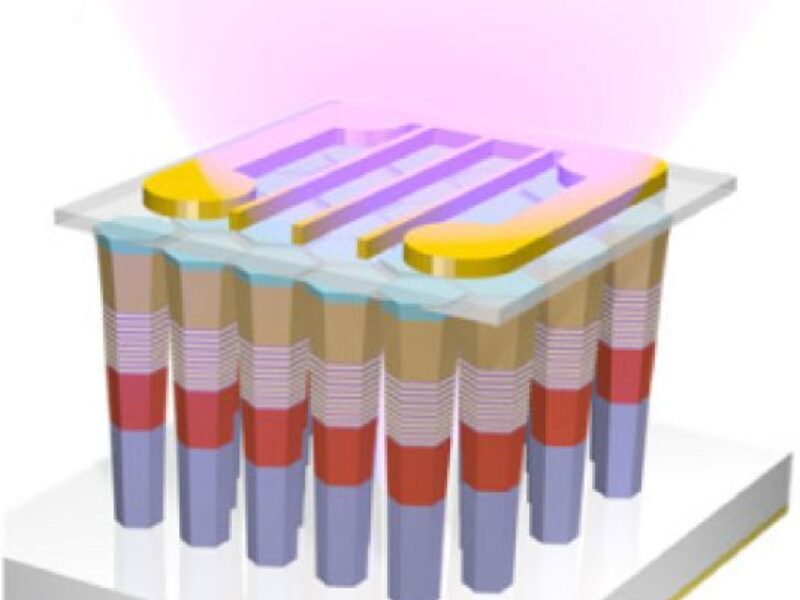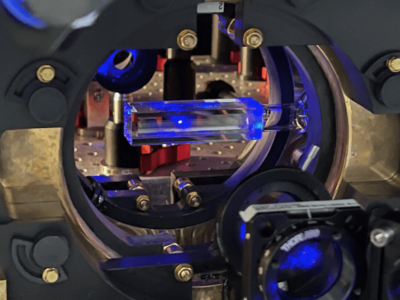
UV LEDs: solving the droop issue
Often, they note AlGaN-based ultraviolet LEDs suffer from low internal quantum efficiency, low extraction efficiency, inefficient doping, large polarization fields, and high dislocation density epitaxy, all limiting their use at high power.

on Ti/Si template substrate.
Starting with a titanium-covered silicon wafer and relying on plasma assisted molecular beam epitaxy (PAMBE), the researchers were able to grow well-separated defect-free Si-doped GaN nanowires, each one embedding a stack of ten uniformly formed AlGaN/AlGaN quantum disks (Qdisks).
While each emitting nanowire was about 8nm in diameter and roughly 350nm long, for practical experimentation, the macroscopic LEDs were made up of whole regions of the densely packed vertically aligned NWs (at a density of roughly 9×109 cm−2).

(a) Cross section SEM image shows vertically aligned NWs.
(b) Top view SEM image of the device grown on Ti/Si substrate shows tightly packed NWs.
(c) High angle annular dark field scanning transmission electron microscopy (HAADF-STEM) of AlGaN nanowire showing the n-type AlGaN layer, AlGaN/AlGaN QDisks, p-type AlGaN, and p-GaN layer.
(d) Active region is showing 10 pairs of uniform Qdisks formation. (d) Zoomed-in image of the Qdisks show compositional variation across the Qdisks.
The devices were grown on a titanium-coated n-type silicon substrate to improve current injection and heat dissipation, they emitted UV light at 337nm (with a narrow linewidth of 11.7nm) for a current density of 32A/cm2 (80mA in 0.5×0.5mm2 device) with a turn-on voltage of about 5.5V.
The AlGaN nanowire UV LEDs operated droop-free up to 120A/cm2 of injection current.
One interesting aspect of their research is the low-cost Ti-coated silicon substrate used to grow the nanowires, not only making the manufacturing process easily scalable, but also combining several benefits brought by the titanium metal layer, including a higher UV reflection, better heat dissipation, and improved current injection.
Published in Optics Express, the paper’s full title is “Droop-free AlxGa1-xN/AlyGa1-yN quantum-disks-in-nanowires ultraviolet LED emitting at 337nm on metal/silicon substrates”
Related articles:
Better light extraction for deep UV LEDs
Hybrid nanohole LED design suppresses efficiency droop
NW-LED fills the green-yellow gap in white light
 If you enjoyed this article, you will like the following ones: don't miss them by subscribing to :
eeNews on Google News
If you enjoyed this article, you will like the following ones: don't miss them by subscribing to :
eeNews on Google News



